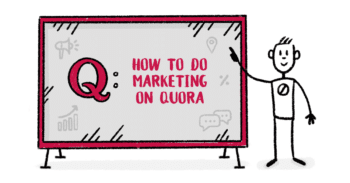Content Distribution for SaaS: Maximize Your Results with the Best Channels

Have you checked your content marketing budget recently? From $1,000 blog posts to $10,000 lead magnets, producing SaaS content gets expensive quickly.
If your marketing strategy involves publishing content to your website and waiting for your target audience to discover it, you could waste a lot of time before you see results.
So how can you extract more value from your content while making it work harder (and faster) for your SaaS?
Content distribution is the key to reaching your ideal customer more efficiently so you can maximize results and increase return on investment (ROI).
In this article, I’ll show you how to build a successful content distribution strategy and break down the optimal owned, earned, and paid channels for SaaS.
What is content distribution?
Content distribution is the process of publishing content in a variety of formats and promoting it through a range of marketing and advertising channels.
The ultimate goal? Getting your content in front of your target customer at the ideal time.
Using a combination of owned, earned, and paid channels, you can distribute virtually any type of SaaS content, including:
- Blog posts
- Case studies and customer stories
- Research reports and white papers
- Ultimate guides and ebooks
- Videos
- Podcast episodes
Why Content Distribution Matters for SaaS
Distribution is an essential part of an effective SaaS content marketing strategy—and a crucial step to take after producing great content.
After all, publishing a blog post on your website doesn’t guarantee it will ever have an audience. According to Ahrefs, almost 91% of content gets zero search traffic from Google.
Distributing content to the right channels is key to attracting your target customer and getting the results you want at every stage of the funnel, from awareness to signups to demos.
SaaS companies of any size can benefit from a content distribution strategy. But what if you have a small team or limited resources? Distributing content across channels can scale your reach in ways that would otherwise be impossible.
Eric Doty, Content Lead at Dock, explains that for a one-person SaaS content team, it’s important to produce media that works seamlessly across channels:
“When I make our case studies, I interview customers on video so I can turn the interview into a longer case study video for our website, shorter clips for social, a cross-cut montage video with several clients, a blog post, etc. But while I have them on video, I also ask them for a tip for using our product and general advice for someone else in that role. I can then use those clips or quotes on social or in other blog posts.”
Top Content Distribution Channels for SaaS
Which distribution channels are right for your SaaS? It depends on your audience.
According to the Content Marketing Institute, LinkedIn tends to be the top-performing distribution channel for B2B SaaS companies. For B2C SaaS, Facebook often works better.
But organic distribution through LinkedIn or Facebook is far from your only option. Let’s look at how you can use owned, earned, and paid channels.
Owned content distribution
Owned channels include outlets your business controls, such as your company’s website. All examples in this section refer to organic channels, as we’ll cover paid below.
Search engine optimization
Concerned that your blog posts might generate zero search traffic? With a strong SEO strategy, you can distribute website content via search engine results pages (SERPs).

For example, HubSpot and Close have successfully optimized the blog posts pictured above to appear on SERPs for a middle-of-funnel (MOFU) search query.
Blog posts
You can (and should) distribute your company’s blog posts. But they can also serve as a channel for promoting other kinds of content—from videos and podcasts to gated content and lead magnets.
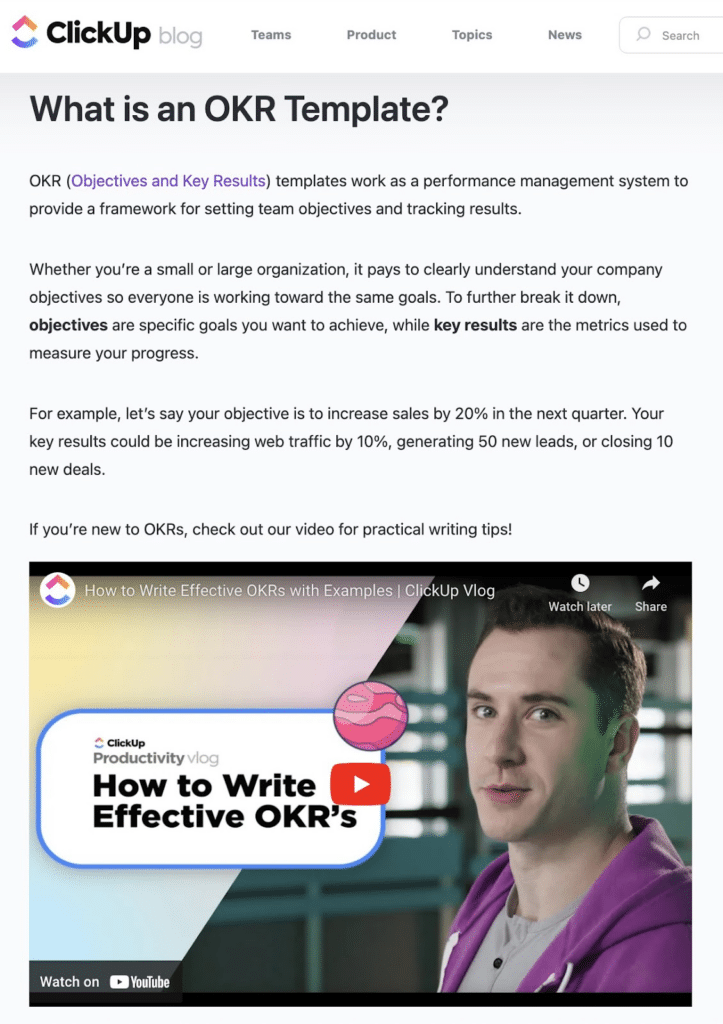
Above, a ClickUp blog post features the company’s YouTube video, which offers an in-depth explanation of one of the article’s subtopics. Below, a HubSpot blog post promotes a lead magnet via a long-form article on a related topic.

Email newsletters
Does your SaaS have a rapidly growing email list? You can share anything from new blog posts to software tutorials to bottom-of-funnel (BOFU) lead magnets via your email newsletter.

For example, the beehiiv email newsletter above announces a new feature and shares a YouTube tutorial designed to help users get started with the email marketing platform.
Social media profiles
If your business has a sizable social media following, you can use LinkedIn, Facebook, Twitter, and even Instagram to reach current customers and prospects who already know your SaaS.

For example, Moz publishes Whiteboard Friday, a weekly video series for SEO experts, on the company’s blog and YouTube channel. Above, a Moz Instagram post shares an episode with the company’s followers and directs them to the original video.

Keep in mind that distributing content through business profiles isn’t your only option. Startups like Dock often leverage founders’ personal profiles to share content on Twitter and LinkedIn, essentially maximizing visibility while building in public.
YouTube
One of the biggest benefits of distributing content via YouTube is leveraging the platform’s search capabilities and recommendation algorithm. That means you can get content in front of subscribers and reach prospects searching for your video’s keywords.

Above, an Instapage YouTube video helps viewers solve a problem via a tutorial. For users with higher intent, the video’s description links out to additional owned content, including a related blog post and a lead magnet.
Podcasts
Want to share thought leadership and expert insights with your audience? Podcasts can be an ideal distribution channel for subject matter experts.
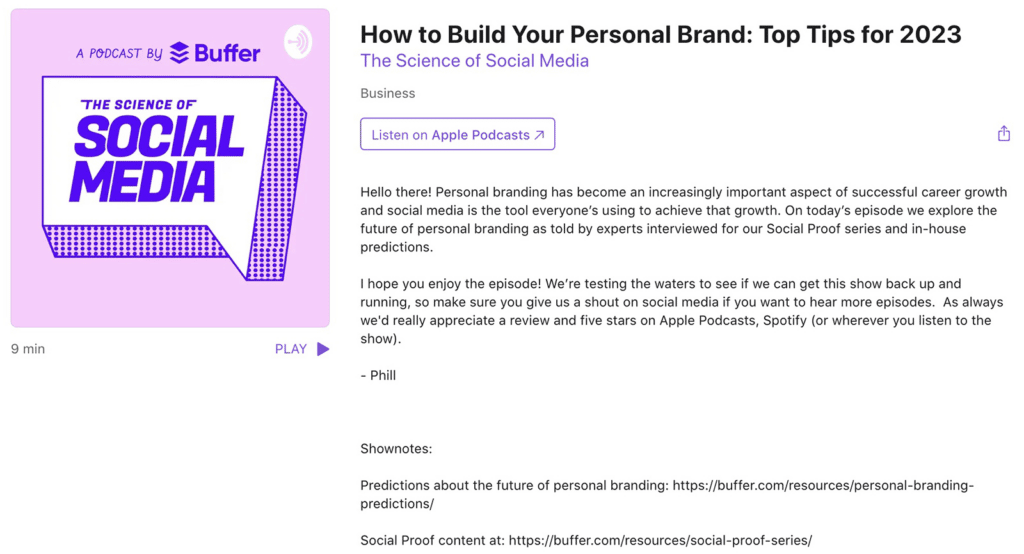
Above, a Buffer podcast episode shares expert tips, including links to the social media dashboard’s resource library in the show notes.
Earned content distribution
Also called shared channels, earned channels aren’t under your company’s control. Although earned distribution often requires relationship building, it can be incredibly effective for promoting content to a wider audience.
Content syndication
The owned distribution channels above all promote content by sharing snippets and links. But you can also promote content by syndicating it on earned channels, including Medium and LinkedIn.
Syndication essentially lets you republish owned content without creating duplicate content issues. It also provides more opportunities to improve visibility and appear in searches—along with a link back to the original source.
Forums
Does your target audience tend to look beyond Google or YouTube when researching solutions? With their question-and-answer format, forums like Quora and Reddit can also work well for content distribution.
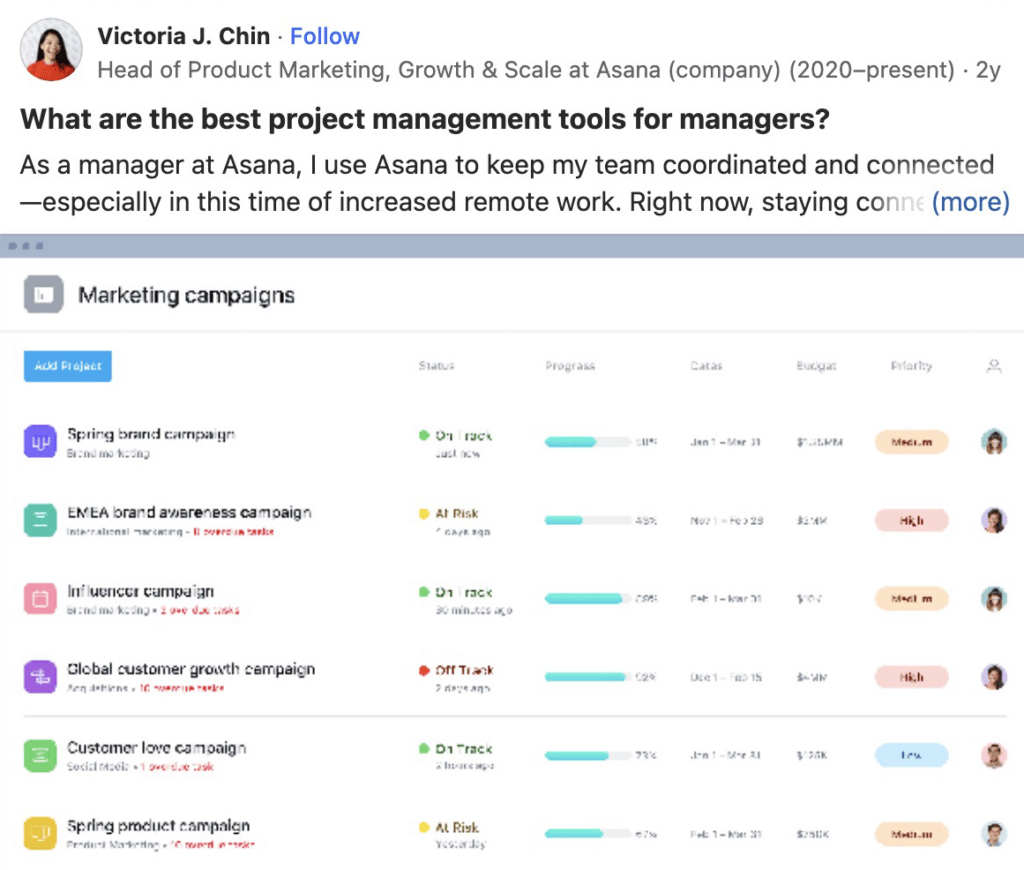
Above, Asana answers a question on Quora, using the opportunity to promote the company’s project management software and share relevant resources.
Influencer marketing
Do your prospects follow industry influencers to stay on top of news and trends? By partnering with influencers, you can tap into relevant audiences without paying for ads.
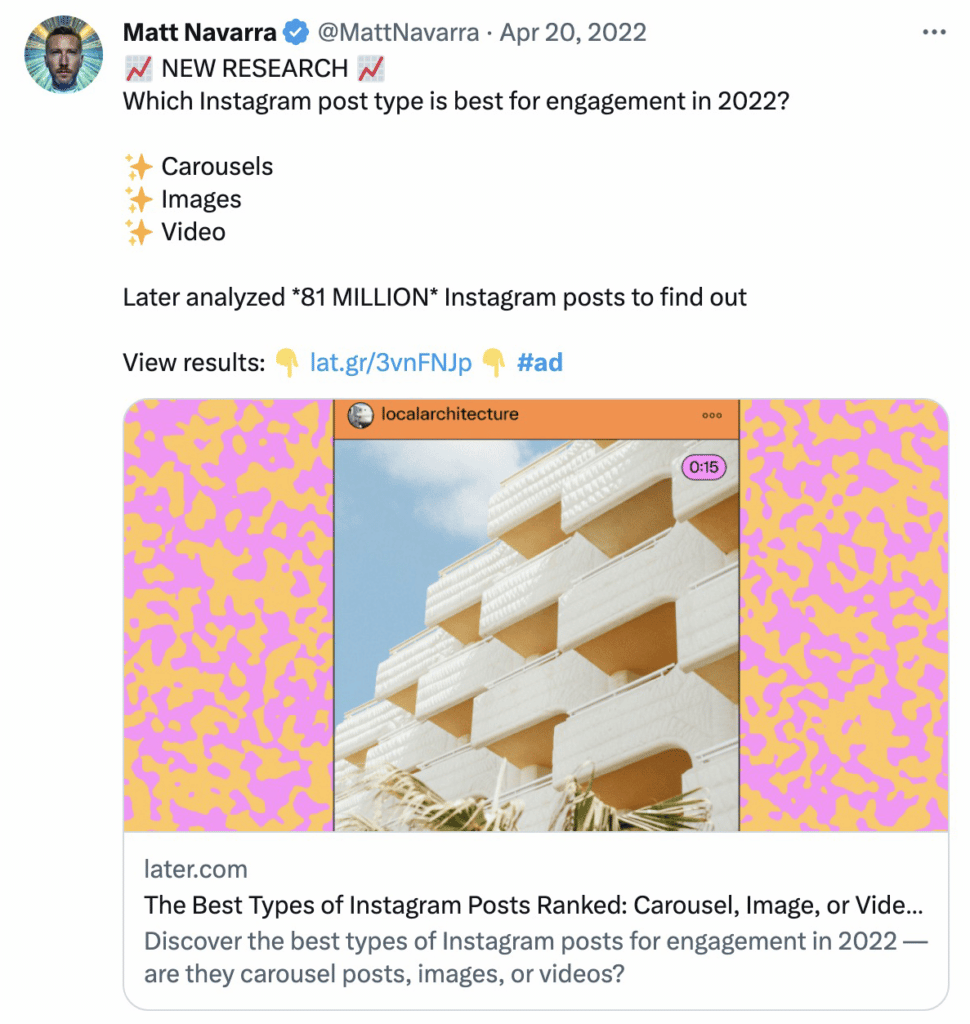
Above, social media influencer Matt Navarra poses a question for his audience and shares the answer via a link to a report by Later, a paid partner.
Public relations
With a strong PR strategy, you can distribute white papers, reports, and original research to relevant publishers. In many cases, you don’t even need press releases to do so.
You can share insights and content with writers seeking sources through outlets like HARO and Help a B2B Writer. In the process, you can build a portfolio of mentions and backlinks for your SaaS.
Guest posts
Sometimes, you might opt not to publish all your best articles directly on your company’s website. Guest posts let you collaborate with other high-ranking sites to publish high-value content.
For best results, seek out sites relevant to your target audience. Then in your guest posts, position your content naturally to maximize click-throughs to your website.
Paid content distribution
When you need to amplify distribution quickly, paid channels are often your best bet. Paid distribution requires a (much) larger budget, but the payoff can be significantly bigger.
Search ads
Want to place your content above top-ranking organic search results? Search ads can be a smart solution if the cost per click (CPC) fits your target customer acquisition cost (CAC).

Above, a search for social media marketing trends includes a paid search ad from Smartly.io, which links to a lead magnet: an ebook on digital advertising trends.
Paid social
With paid social, you can reach your target market as they engage on networks like LinkedIn, Facebook, and Twitter. Using a combination of first-party data and competitor targeting, you can build audiences and distribute relevant content throughout the funnel.
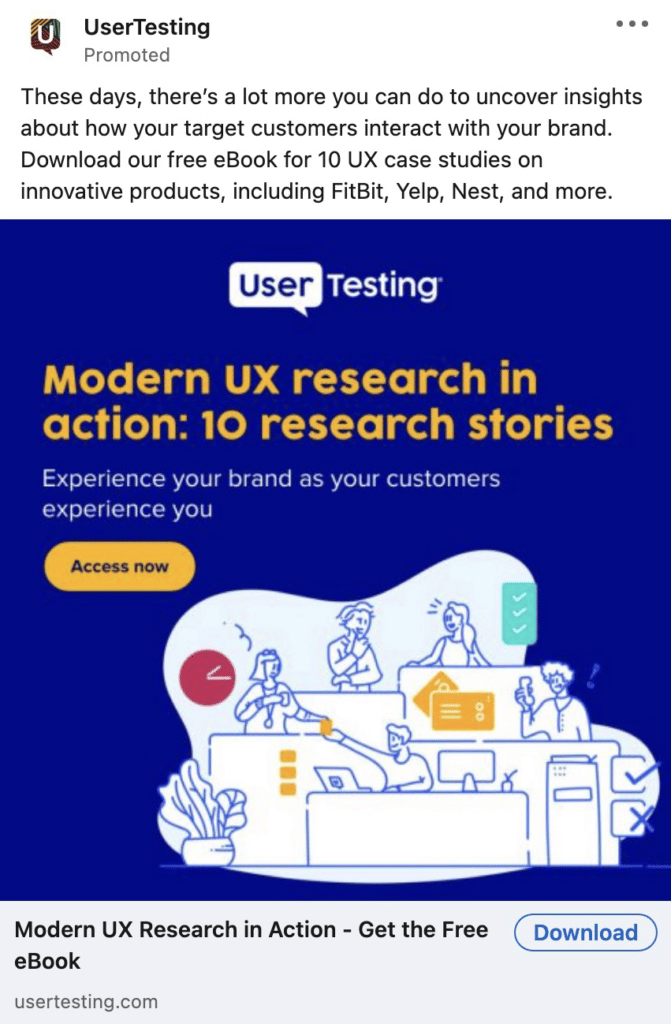
In the LinkedIn ad above, UserTesting promotes a lead magnet, which prospects can download in exchange for their contact information.
Native ads
With native ads, you can pay to distribute content that blends in with organic content on third-party websites. While most of the channels above work for both B2C and B2B SaaS, native ads generally work best for distributing B2C content.
For example, distribution platforms like Outbrain and Taboola can help B2C SaaS companies scale quickly.
How to Create a Content Distribution Strategy
As you can see, you have tons of options for distributing content. Now let’s look at how to build a strategy for promoting this content effectively.
Audit your content library
Whether you have a little or a lot of content to share, audit your content library and make a plan to repurpose what you’ve already produced. Tools like Airtable and Google Sheets can help you juggle a lot of content in various formats.
Use your content marketing metrics to determine which content to focus on first. For example, a lead magnet that’s already performed well in paid campaigns could be a good candidate for incorporating into a blog post or repurposing on social media.
Detect any content gaps in your library or find low-performing content that could use a refresh. Add them to your content plan so you can produce and distribute them later.
Find your audience and choose channels
There’s no one-size-fits-all content distribution strategy. To build one that works for your SaaS, identify your audience and find where they spend time.
For example, if you manage content marketing for a B2B SaaS business, LinkedIn posts and Twitter threads might be goldmines for content distribution.
If you do marketing for a B2C SaaS company, native advertising, and Facebook posts might be a better fit.
Use your buyer persona to guide you in the right direction. Choose a few channels to start, and remember that you don’t need to distribute across every content marketing channel.
Decide on content distribution KPIs
Once you’ve chosen content and distribution channels, decide on the key performance indicators (KPIs) you’ll track to measure success.
Align these KPIs with the SaaS funnel stage your content targets. Here’s a quick breakdown:
- For top-of-funnel (TOFU) content, track metrics like impressions and engagement.
- For middle-of-funnel (MOFU) content, monitor metrics like clicks, DMs, and signups.
- For bottom-of-funnel (BOFU) content, measure metrics like conversions and CAC.
Be as specific as possible. Set measurable goals so you can easily tell whether your strategy is working.
Create a content distribution calendar
In most cases, it’s best to publish content to your top-performing owned channels—such as your company’s blog or YouTube channel.
Then you can map out when and where to distribute each piece of content. Tools like Airtable and HubSpot can help you track timing and catalog captions and assets.

For example, Breadcrumbs first published the video above on the SaaS company’s YouTube channel.
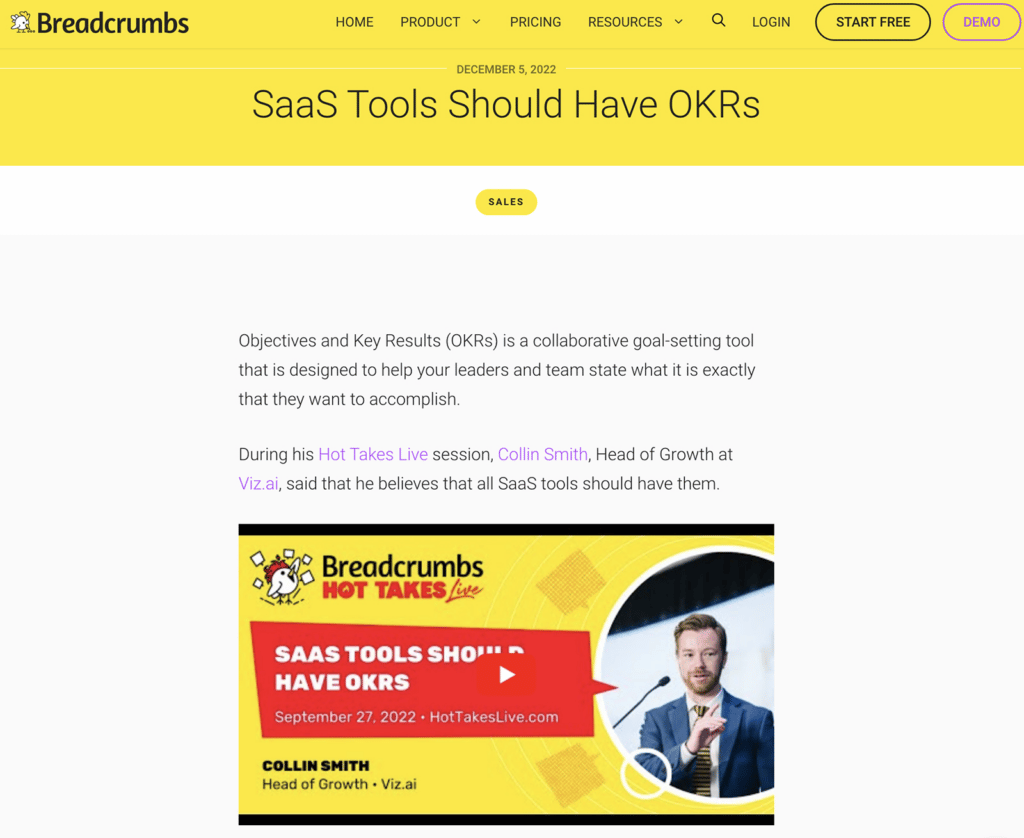
Then Breadcrumbs incorporated the video into a blog post that summarizes the takeaways from the conversation.
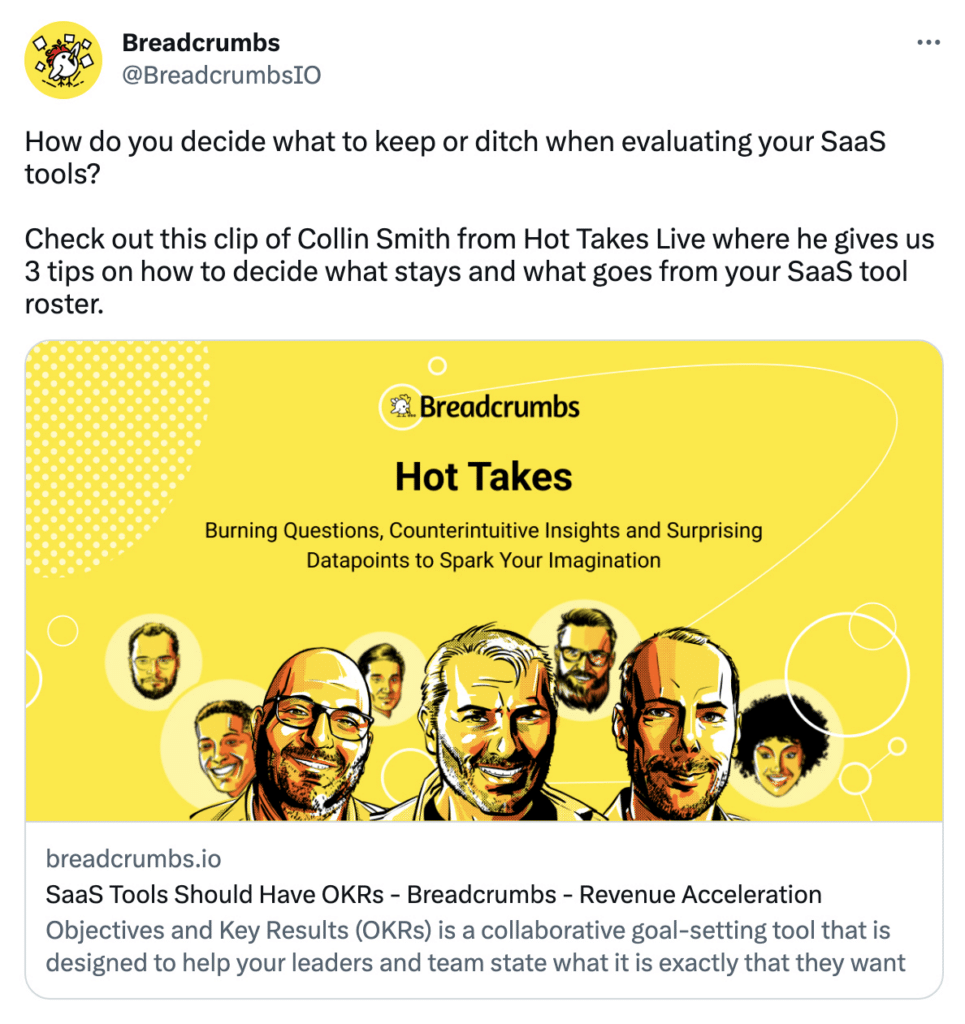
Breadcrumbs later distributed the blog post to the revenue acceleration platform’s social media channels, as you can see in the tweet above.
Should you synchronize distribution across channels? You certainly can, especially if the content is critical to time-sensitive marketing goals.
But you can also space out your distribution schedule, especially if you want to keep the content on your audience’s radar over a longer period. For example, the Breadcrumbs content above spans a two-month distribution timeframe.
Repurpose content across channels
Next, create content to share across channels. Use each channel’s best practices to distribute content in a format that’s likely to perform well.
For example, let’s say you started with an hour-long YouTube livestream. You could:
- Cut multiple highlights into 15-second Instagram reels
- Showcase key takeaways in a LinkedIn document
- Turn some of the main points into a Twitter thread
- Transcribe the conversation in a blog post
- Partner with an influencer to share the live stream
Whether you use one or all of the distribution channels above, include a call-to-action (CTA) and a direct link that users can click to consume the original content on one of your owned channels.
Track and analyze performance
As you distribute content, measure performance using the KPIs you defined earlier. Depending on your KPIs and distribution channels, you may need multiple analytics tools.
For example, use native platform analytics to track results from social media posts, YouTube videos, podcasts, and ads. To measure traffic and other outcomes on your website, use Google Analytics or a comparable web analytics tool.
When linking back to your website, add UTM codes to the URLs you distribute. With UTM codes, you can attribute results accurately and identify top-performing channels and campaigns easily.
Final Thoughts on Content Distribution
Building a content distribution strategy might not take long at first. But perfecting your approach should be an ongoing effort.
Once you’ve identified what works best, repeat your process and refine it. Double down on channels that work, eliminate those that don’t, and allocate your content distribution budget to maximize success.


